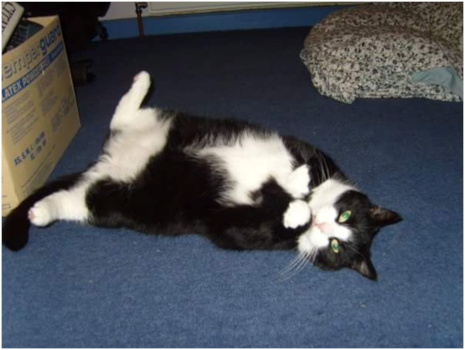That’s the line my husband used when I suddenly realised how fat my cat Aaliyah had actually got. It’s easy not to see the weight piling on when you see your pet every day, but that doesn’t mean it’s not happening. As a veterinary nurse regularly meeting with clients and addressing their cat’s weight issues, their questions are the same as my husband’s. How have they got this big? Why didn’t we notice? And what can be done to help her?
It was shocking when I put her on the scales and they passed 6kg, I asked my husband if he was giving her any food after her meals. “No, just a few Dreamies” he replied. He had fallen into the trap that a lot of owners do – Aaliyah would come to him, and look at him with her big green eyes and meow like we hadn’t fed her for a week. So out of love he would give her a few extra ‘tid bits’.
Obesity in cats is a very real threat to their health which can lead to:
- Diabetes mellitus – a very serious chronic illness requiring daily injections to control insulin levels, possibly resulting in death if not properly controlled.
- Hepatic lipidosis – a disease where fat builds up in the liver resulting in decreased liver function. It can be life-threatening if an obese cat does not eat for an extended period, loses weight rapidly, or is otherwise stressed because they are prone to hepatic lipidosis.
- Arthritis – a painfully debilitating disease which is already common in older cats and even more so in those that are overweight. The cat’s joints have to cope with the additional weight as they jump and land as the extra pressure can cause permanent damage.
- Skin and coat issues – obese cats find it difficult to reach all areas and groom sufficiently which can lead to dry flaky skin. In long haired cats this often results in large matted areas of fur which can be very painful and become so tight they tear the skin.
So how do you know if your cat is an ideal weight?
There is no magic weight that your cat should be – they, like us, are completely individual and a slave to genetics. So the best thing to do is give them a good stroke. Can you feel their ribs? Do they have a waist line when you look at them from above? Does their head look too small for their body?
There are many charts and graphs out there, I quite like this one courtesy of icatcare.org:
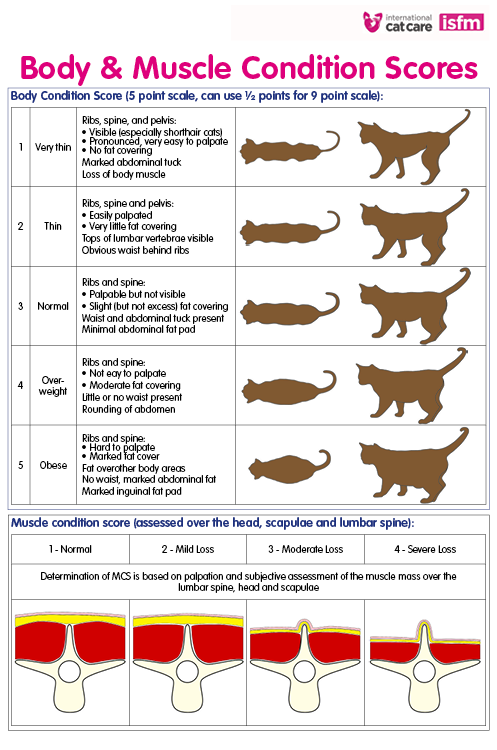
What can you do to help your cat lose weight?
Diet
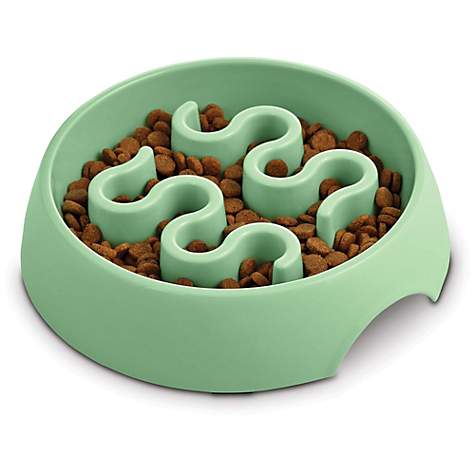
- Take a look at the ingredients in your chosen food, try to go for a good quality brand with a high meat content. Cats are strict carnivores which means they are built to eat meat, not plants. Therefore, to lose weight they require a diet high in protein (meat) and low in carbohydrates (plants like corn, wheat, potatoes etc) – just be sure what you feed your cat is complete and balanced. There are many complete, high quality, high meat diets on the market these days.
- Your vet may recommend a prescription diet for weight loss. Some of these can be helpful but should always be fed under the close supervision of your vet or nurse so that you can try something else if it doesn’t seem to be working. Feeding a special weight loss diet for too long can result in poor health, even if your cat is still overweight.
- Wet foods are almost always better suited for weight loss because they can be very high in meat without the manufacturer having to worry about forming it into a dry biscuit. If you want your cat to lose weight, ditch the dry food completely or at least limit it to approximately 25% of their daily intake
- Feed to the recommended guideline amount of your chosen diet. All pet food has a guide to feeding on the side, remember this guideline is for their recommended weight not their current weight. Ask your vet nurse if you’re not sure of your cat’s ideal weight. Remember, if you’re feeding both wet and dry foods, don’t give your cat their full daily allowance of each! You’ll have to do some maths and calculate the correct percentages.
- Feed little and often. Feeding large meals twice a day encourages them to scoff their food and overfills their stomachs, often making them feel hungrier later. Most cats, especially cats on a diet, prefer to eat many times a day which is fine, just decrease the quantity fed each time.
- Set out the full daily allowance at the beginning of the day and then split this between each meal. Once it is gone, do not go back for more.
Treats
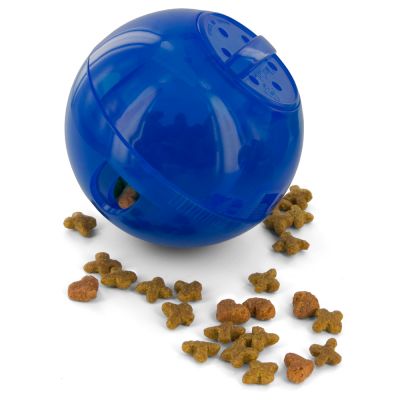
- Most treats are like us eating a chocolate bar and should not be given in excess (more than 3 a day is excess for a cat despite what the package says). If you must feed treats use a good quality brand that is purely meat and not very calorific.
- If, like my loving husband you cannot resist your cat’s stares of death, hold back some of the daily allowance and when you are tempted to give them a treat give them a bit of what they were going to get anyway.
- Better yet, exclude treats entirely. If your cat comes up to you begging for food, distract them with a stroke, give them a brush, play with a toy or put down a bit of catnip. It’s often a bit of fuss they want as much as the food itself.
Exercise
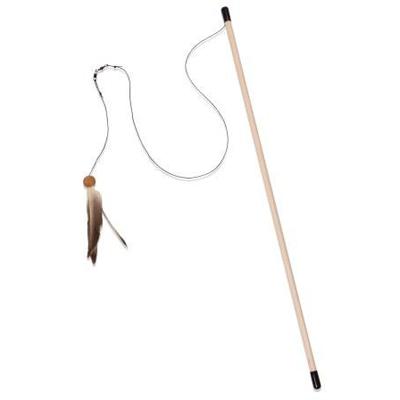
- Most of our feline friends like nothing better than to laze around in the sun or sit beside a warm fire watching the world pass by. Obese cats take this laziness to new levels, however. So we need them to be active to lose weight, but they don’t want to be active until they lose weight – it’s a difficult paradox. But you’ve got to start somewhere.
- Food is probably a good motivator for them so move their food to different places – upstairs, downstairs, on a worktop or do a lap of the house with their breakfast in your hand so they follow.
- Does your cat scoff their food? Try putting a large object in the middle of the bowl so they have to eat around it, or purchase one of the various ‘slow feeder bowls’ available online. This slows the meal process and makes them feel like they have eaten for longer.
- If they do eat some dry food, take a small portion of their daily allowance and scatter it across the floor so they have to move to eat. You can also try a slim ball, which is a small ball with holes in it that you put some of their food in and they have to move the ball to get food.
- Toys are a great source of exercise. Use the springy mouse on a line or feather wand toys to encourage movement. Catnip toys can be chased. Plain dried catnip can be sprinkled onto the floor, allowing you the pleasure of watching a mini cat yoga session… Laser lights can encourage them to chase, just always give them something to catch after playing with a laser light to avoid frustration and never shine it directly at the cat.
Whatever weight loss regime you choose, get the whole family involved. It’s important that everyone in the household is part of the process and that there are no secret feeders. If necessary, have a tick chart so you can see when and how much your cat has been fed. No more excuses, you can do it!
Resources
- International Cat Careicatcare.org/advice/feeding-your-cat-or-kitten — Good general advice about what and how to feed your cat
- CatInfowww.catinfo.org — a very interesting website written by an American vet devoted to feline nutrition and campaigning for a wet food diet for all cats. There is a section about making cat food at home which is not something that we recommend in most cases as it is so difficult to do correctly, but the site is good reading. She also has an article about obesity here: www.catinfo.org/?link=felineobesity


